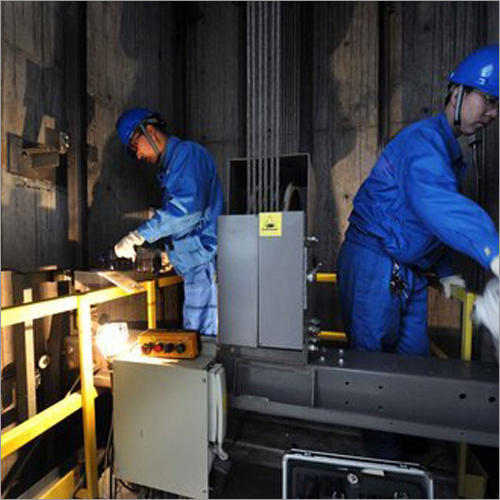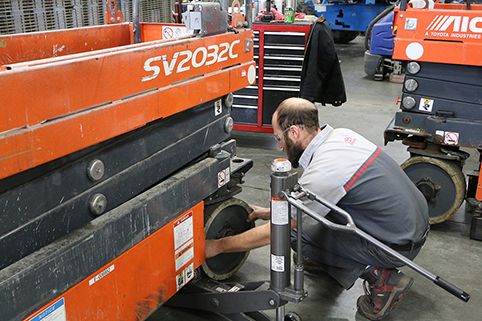Comprehensive Overview to Lift Systems and Their Upkeep
Browsing the complex globe of lift systems and their upkeep is a job that requires accuracy and knowledge. From the various kinds of elevator systems in use to the precise adherence to safety regulations, the maintenance of these upright transportation gadgets is a diverse undertaking.
Sorts Of Elevator Solutions
Lift systems been available in different types, each made to fit certain building requirements and individual demands. One of the most typical kinds include hydraulic lifts, traction elevators, machine-room-less lifts, and vacuum cleaner lifts. Hydraulic elevators are optimal for low-rise buildings and utilize a hydraulic piston to move the lift automobile. Grip lifts, on the other hand, are much more matched for skyscraper buildings and utilize steel ropes and weights to relocate the car. Machine-room-less elevators are a space-saving option as they do not require a separate device space for the lift machinery. Vacuum cleaner elevators, an extra contemporary development, usage air pressure differentials to move the auto within a transparent tube.
Each kind of elevator system has its own benefits and downsides, making it essential for building proprietors and designers to meticulously consider their particular needs before selecting one of the most appropriate choice. Aspects such as developing elevation, space schedule, power effectiveness, and budget restrictions all play a considerable duty in determining the best lift system for a particular structure.
Typical Maintenance Problems
Routine maintenance of elevator systems is vital to ensure smooth operation and prolong their life expectancy. In spite of regular maintenance, elevator systems can still come across typical upkeep concerns that need to be promptly resolved to prevent disruptions in service. Normal examinations and positive upkeep can aid determine and deal with these typical maintenance problems before they intensify and impact the overall efficiency of the elevator system.
Safety Laws and Compliance
Following rigorous security laws and making certain compliance with market criteria are extremely important for preserving the operational stability of lift systems. Lifts are subject to a thorough collection of safety and security policies to protect travelers, maintenance workers, and the general public. Regulatory bodies such as the Occupational Safety And Security and Health And Wellness Administration (OSHA) in the United States and the European Lift Organization (ELA) in Europe develop guidelines that cover numerous facets of elevator style, installation, maintenance, and procedure.
Compliance with these laws is not just a lawful requirement however also a moral commitment for building owners and lift upkeep firms. Regular examinations, maintenance checks, and adherence to safety and security procedures laid out in the guidelines are vital to make sure the risk-free and effective procedure of elevator systems.
Ideal Practices for Upkeep

Building owners need to likewise take into consideration spending in modernization upgrades to boost i loved this the efficiency and safety and Your Domain Name security of their elevator systems. By following these best practices, lift systems can operate smoothly and securely, supplying trusted vertical transportation for owners.

Advanced Technologies for Performance
Applying cutting-edge modern technologies in lift systems can dramatically enhance functional effectiveness and guest experience. lift maintenance london. One of the vital advancements in lift technology is the introduction of destination control systems. These systems allow guests to input their desired flooring before going into the elevator, which then guides them to the most efficient vehicle. By minimizing unnecessary quits and enhancing traveling paths, location control systems lower wait times and congestion in high-traffic buildings.
Moreover, the assimilation of smart sensors and anticipating upkeep capacities has actually transformed lift maintenance. These sensing units can detect possible concerns prior to they rise, enabling positive maintenance interventions and minimizing downtime. Furthermore, the use of energy-efficient parts and regenerative drives helps in reducing power usage and operating prices in lift systems.
Furthermore, the implementation of cloud-based surveillance and remote diagnostics enables for real-time tracking of lift performance and prompt troubleshooting of any kind of malfunctions. This aggressive technique not just boosts system dependability yet likewise enhances the overall user experience by making certain smooth and undisturbed elevator procedures.
Verdict
Finally, recognizing the various kinds of elevator systems, common upkeep problems, safety policies, finest upkeep methods, and advanced innovations for efficiency is essential for making certain the smooth operation of elevators. By adhering to security laws and carrying out ideal techniques for maintenance, building proprietors can extend the life expectancy of their lift systems and guarantee the safety and security of passengers. It is very important to remain updated on the most current developments in elevator modern technology to enhance performance and news reliability.
The most usual kinds consist of hydraulic lifts, traction lifts, machine-room-less lifts, and vacuum cleaner elevators. Hydraulic elevators are perfect for low-rise structures and utilize a hydraulic piston to relocate the elevator vehicle. Machine-room-less lifts are a space-saving option as they do not need a different machine room for the lift equipment. Regular evaluations and aggressive maintenance can assist recognize and resolve these usual maintenance concerns before they rise and influence the total efficiency of the elevator system.
